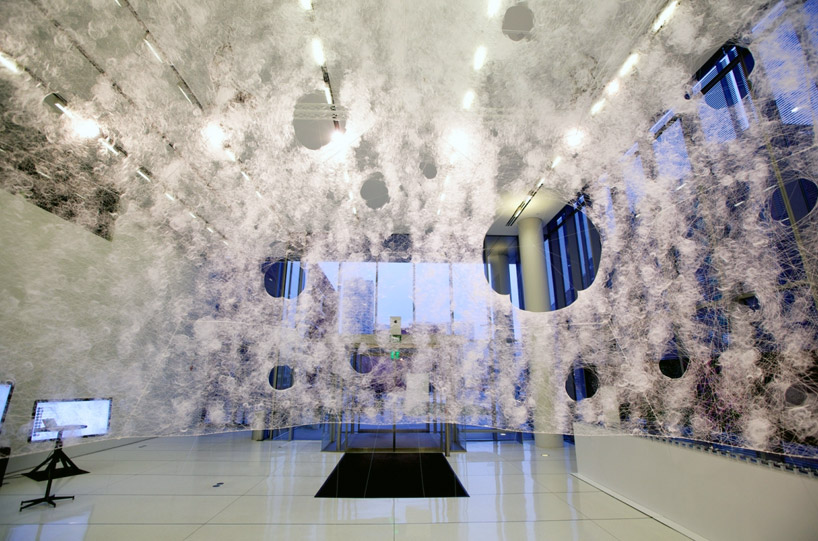
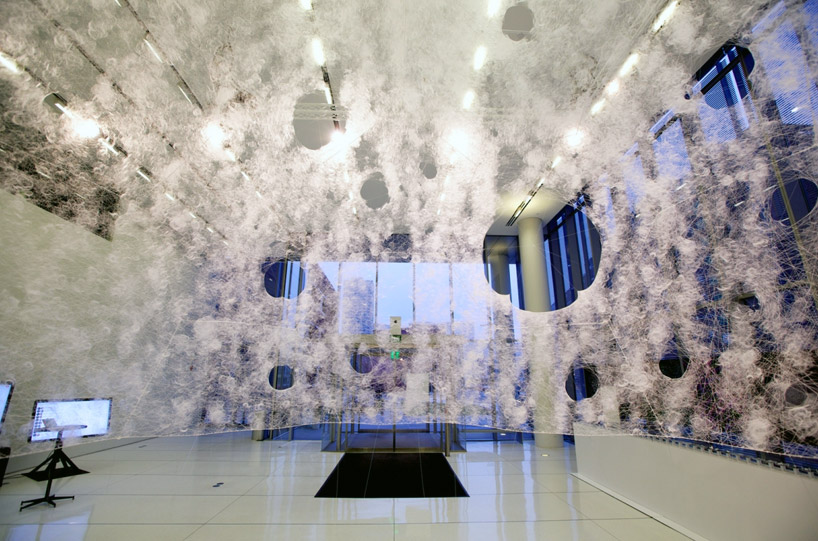
As new technologies continue to astound and amaze, it is easy to forget that Mother Nature is the original inventor. The utilization of biology in fabrication has been seen in projects like Jannis Huelsen’s Xylinum Stool and under the leadership of Neri Oxman, the Mediated Matter research group at MIT Media Lab further explored the relationship between the digital and the biological in the fabrication design of Silk Pavilion.
Experiments guiding the spinning of silkworm cocoons led to computational tools to emulate their behavior. This program enabled the team to fabricate a primary structure using 26 polygonal panels of CNC(Computer-Numerically-Controlled) cut silk threads. In order to fill in the geometric orb, a swarm of 6500 silkworms was introduced to the structure. Affected by both spatial and environmental conditions, the silkworms essentially acted as “smart” 3D printers, weaving an intricate and dazzling pattern atop the preexisting silk and metal construction.
Don’t look for silkworms as 3D printers anytime soon; however, Silk Pavillion shows the limitless possibilities of combining the technological and the organic.
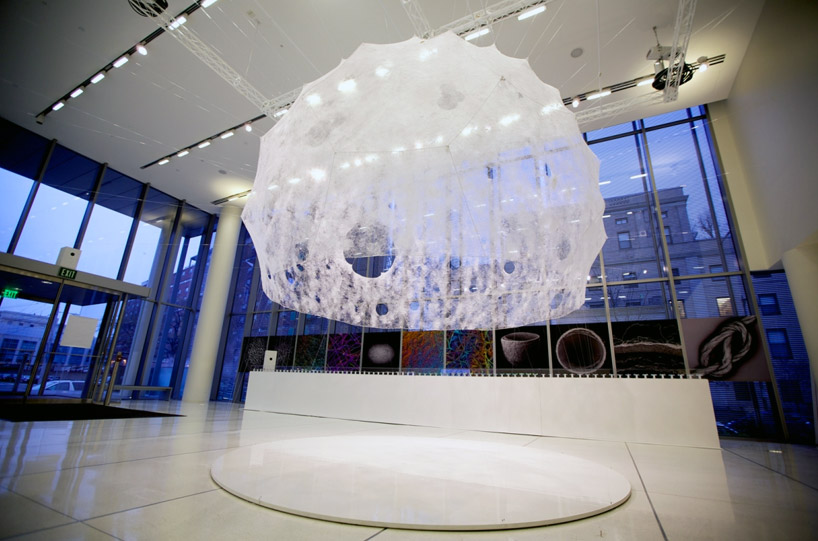
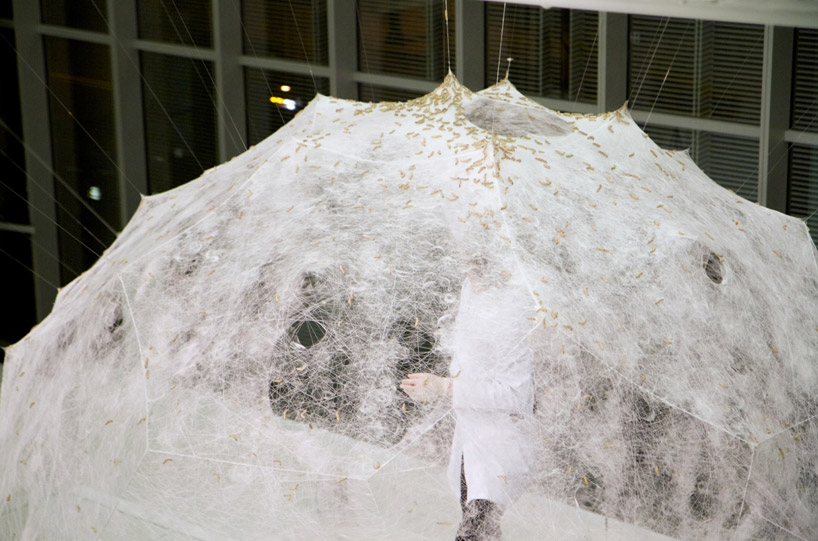
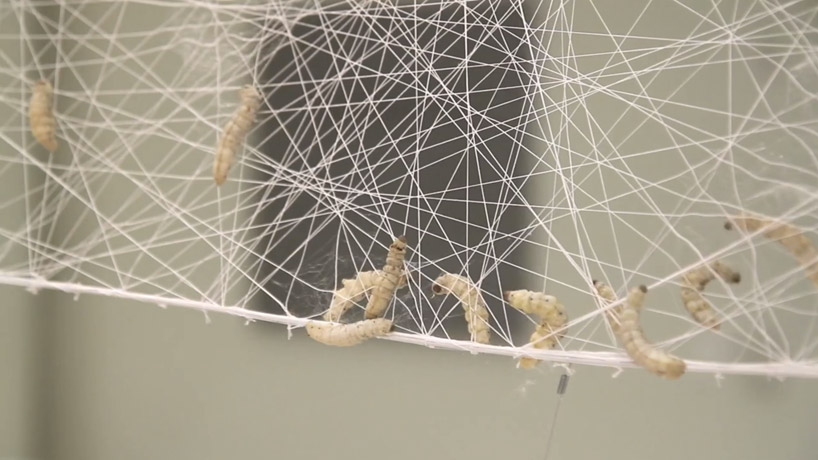



Discussion